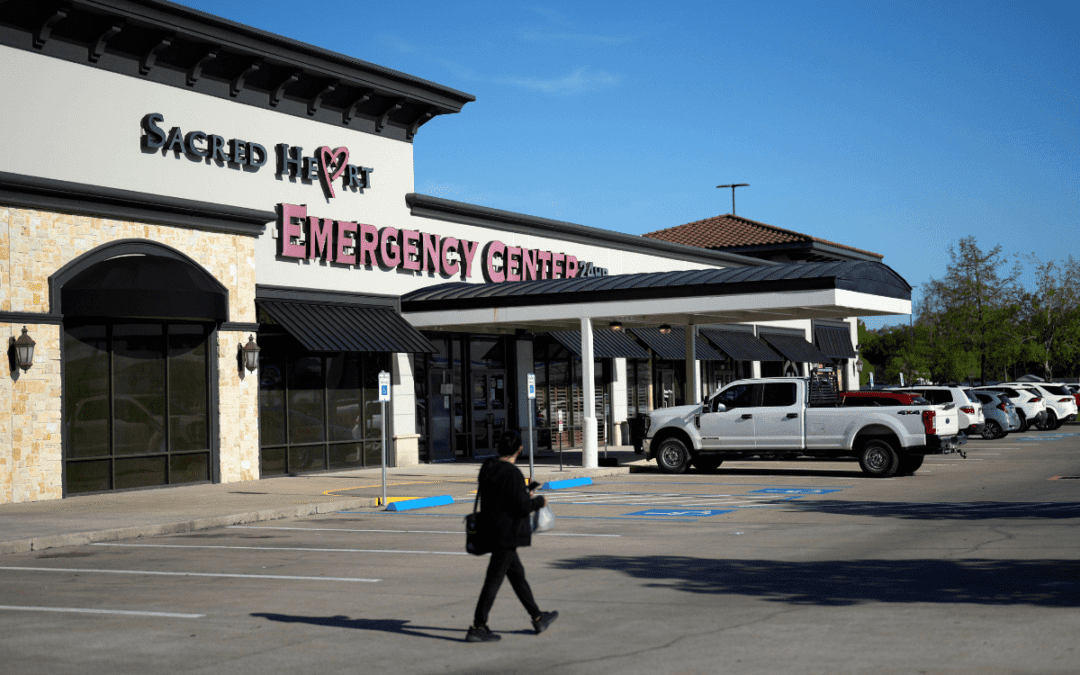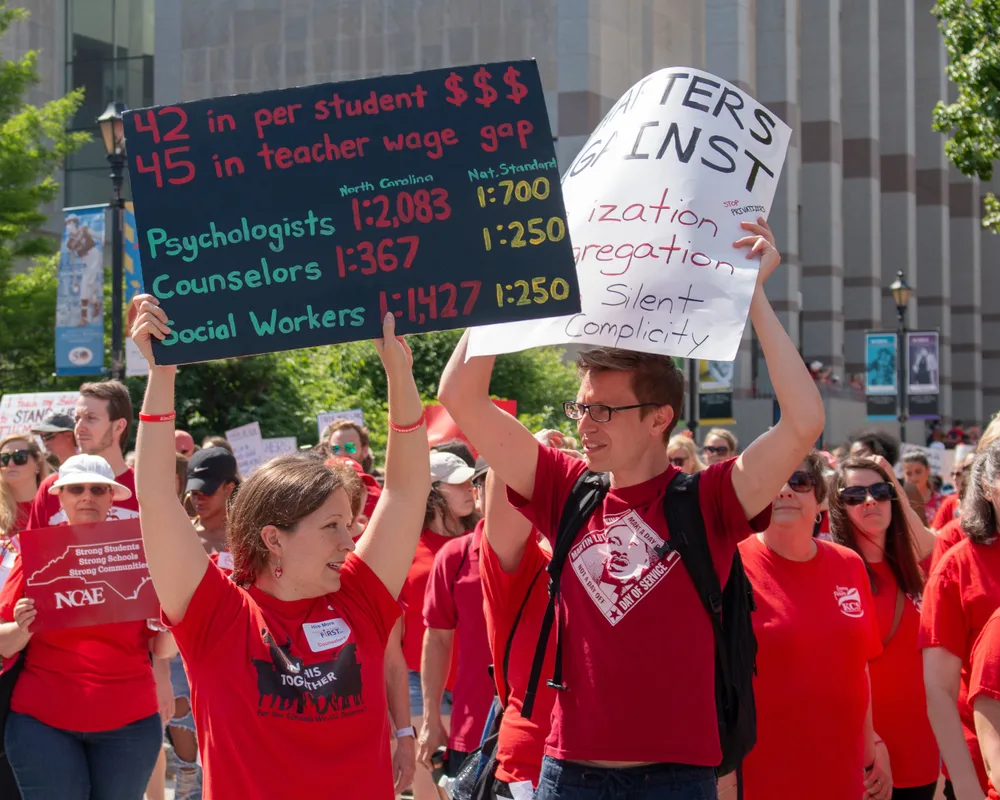
This Associated Press file photo show a group of Lumbee Native Americans in Maxton in front of a crude cross they captured during a gun battle with members of the Ku Klux Klan in 1958. (Photo via AP Photo)
From schools where segregation was challenged to early sit-ins, visit these spots to explore North Carolina’s proud civil rights history.
It wasn’t just Woolworth’s.
The Civil Rights Movement’s path through North Carolina was paved in many places in the 1950s and 1960s.
And while the historic protest at the Greensboro Woolworth’s lunch counter is well known, many other important moments from the movement occurred in North Carolina.
Want to relive some of that history? Check out our guide to lesser-known civil rights history in the Tar Heel state, and for more sites or virtual exploration, visit the NC Civil Rights Trail.
Charlotte Hawkins Brown Museum, Sedalia
The granddaughter of slaves, Charlotte Hawkins Brown was born in Henderson and traveled north to pursue her education. In 1902, she returned to her home state to open a school for Black students,the Palmer Memorial Institute. The school began as an agricultural and manual training institution but evolved into a nationally-recognized preparatory school, sending Black boys and girls on to colleges around the country. The former campus, which officially closed during the 1970s, now houses the Charlotte Hawkins Brown Museum—the first state historic site honoring Black heritage—that tells the story of Brown and the Palmer Institute’s impact on the lives of thousands of North Carolinians.
Royal Ice Cream Sit-In, Durham
While the Greensboro Woolworth sit-in gets more attention, the state’s first official sit-in protest happened years earlier in Durham. In 1957, young people from Asbury Temple Methodist Church took seats at the whites-only counter at Royal Ice Cream in protest of segregation. The Black protestors were arrested and charged with trespassing, and their case advanced to the NC Supreme Court to challenge the legality of segregation, which upheld the law regulating segregated facilities. Their attorneys took the case to the US Supreme Court, which refused to hear the case. A sign from the parlor is displayed at the Museum of Durham History, along with other exhibits and artifacts from the city’s civil rights history. While you’re in Durham, be sure to visit the childhood home of activist Pauli Murray, which now operates as the Pauli Murray Center for History and Social Justice.
Indian Woods Missionary Baptist Church, Windsor
Officially established in 1877, Indian Woods Missionary Baptist Church has played an enduring role not only in the spiritual lives of Black Eastern North Carolinians, but also in helping people fight for their civil rights.
In 1965, the church hosted the Black Belt Civil Rights and Anti-Poverty Conference, a large-scale event focused on voter rights for Black and Native American Southerners.
The conference was part of the Black Belt Project—a movement that started in northeastern North Carolina dedicated to protecting the civil rights of Black residents in that region’s rural counties. The Black Belt refers to a region of particularly fertile soil stretching across the South that was historically associated with cotton farming and the practice of slavery.
Today the church still serves as a hub for the community, holding weekly services and other events.
Hyde County School Boycott, Swan Quarter
In 1968, the Hyde County Board of Education created a plan in the wake of desegregation orders to close all of the county’s Black schools.
The move angered Black families—who were not consulted prior to the decision—disregarding the educational heritage of those schools and their place in the coastal county’s Black community, as well as eliminating the jobs of Black teachers and principals.
Families and demonstrators, led by civil rights champion Golden “The Great Agitator” Frinks, staged a year-long boycott of the county’s schools known now as the Hyde County School Boycott, along with sit-ins and rallies. The protests led to the county desegregating while still maintaining the traditionally Black schools. A marker stands outside the county courthouse commemorating the event.
MLK in Rocky Mount, NC
One year before he made history on the steps of the Lincoln Memorial, Dr. Martin Luther King, Jr., delivered his “I Have a Dream” speech to a rapt audience in the gymnasium of Booker T. Washington High School in Rocky Mount.
The 1962 visit was his first to eastern North Carolina, and he spoke directly to the crowd of around 1,800 people, saying: “I have a dream that one day right here in Rocky Mount, the sons of former slaves and the sons of former slave owners will meet at the table of brotherhood, knowing that one God brought man to the face of the earth.”
The Battle of Hayes Pond, Maxton
In 1958, a group of Ku Klux Klan members gathered for a rally near Hayes Mill Pond in Maxton, with the intention of intimidating Lumbee Indians and Black residents living in Robeson County.
A larger group of Native Americans confronted the Klansmen, forcing them to flee.
Amazingly, no one was killed during the altercation known as the Battle of Hayes Pond, and the Klan never held another public gathering in Robeson County. The event garnered national media coverage and brought attention to the Lumbees’ struggle for justice and respect.
Literacy Test Protests, Roper
During the Jim Crow Era, literacy tests were used as a means of preventing Black citizens from voting in the South.
But in 1952 in the small eastern North Carolina town of Roper, E.V. Wilkins and his sister, Willie Mae Winfield, led a protest of Black citizens against the community’s literacy tests. The effort proved successful, forcing the town to overturn its literacy test law and restore voting rights to all Black citizens.
Politics

Emergency rooms refused to treat pregnant women, leaving one to miscarry in a lobby restroom
By AMANDA SEITZ Associated Press WASHINGTON (AP) — One woman miscarried in the lobby restroom of a Texas emergency room as front desk staff refused...

‘Unfit to be our next governor’: NC basketball greats speak out against Mark Robinson’s run for governor
NC has a long history of greatness on the basketball court. Now college basketball players from UNC, NC State, and Duke are wading into politics....
Local News

Good News Friday: It’s a good day to be a fan of the NC State Wolfpack
The men's and women's teams will compete for a national championship in college basketball this weekend. Plus: How to watch the solar eclipse, and...

The zodiac signs of 12 iconic women offer insight into their historic accomplishments
Zodiac signs can tell you a lot about someone’s personality. Whether they’re an earth, water, air, or fire sign, these 12 categories (which are...




